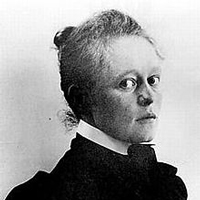HELENE SCHJERFBECK PAINTINGS FOR SALE & BIOGRAPHY
HELENE SCHJERFBECK
Finnish, 1862–1946
BIOGRAPHY
"Helene Schjerfbeck suffered from poor health since childhood, but she was completely absorbed by her art. When she was 11, she began her studies at the school of the Finnish Association of the Arts in Helsinki. By the time she was 18, she was painting noteworthy portraits of children and of genre scenes. After having passed through various studios in the school she left Finland for Paris in 1880. She took part in the Salon des Artistes Français (she continued to contribute to it after she left Paris), winning a bronze medal for the Exposition Universelle of 1900. In the 1880s she lived in St Ives and was a member of the artists community.
"The 1888 version of The Convalescent shows a wonderful mastery of traditional technique. Later she became interested in esotericism, an interest that was reinforced during her travels, between 1892 and 1894. From 1892 to 1894 she travelled to St Petersburg, Vienna and Florence, before returning to Finland, she then spent the last two years of her life in Sweden, near Stockholm. In France she met the artists of Concarneau and Pont-Aven, where she painted landscapes in the open air, in the style of Gauguin and the Nabis. Later, she considered this collection of landscapes as 'an impersonal and inexpressive period' in her work. In about 1882 she began studies on the theme of dancing shoes. She pursued this theme in a lithograph in 1938. One of the characteristics of her work is the repetition of several themes, which continued throughout her life. One of these themes was the series of self portraits that from 1910 became an obsession with her. The development of these these themes display the evolution of her technique and its pictorial conception, which tended towards an ever more radical emancipation the well-mannered painting in the Scandinavian countries. In 1888 she was painting still in the spirit and technique of the nineteenth-century post-Romantic tradition, but by 1890 she came under the influence of the Symbolists. The earlier treatment - exact and detailed - was refined and replaced by a style that progressively reflected the painters of Pont-Aven.
"Schjerfbeck is considered one of the greatest Finnish painters of the turn of the nineteenth century, and is best known most for The Convalescent. After the first version of 1888, she took up the theme again in 1927, using different techniques, and then again in still different ways in 1938-1939, using drawings, watercolors and lithographs. The 1927 version shows a tighter composition with insignificant details of the décor eliminated, than in the first painting of 1888. The creation is direct, spontaneous and syntheticist, but the pigmentary matter is still smooth and sensuous. In Portrait of Gösta of 1933, vivid paint textures in places, give shape and life to a face created with large, flat, syntheticist strokes, and with firm, simple strokes marking the eyebrows, eyes, nose, and mouth.
"During the last two years of her life in Sweden she was still working on the last version of The Convalescent. All the simplifications of stroke, surface, volume, detail and décor climax here. Apart from the contrast between the black jersey and the clear ochres of the face, hands and bed linen, there are almost no colors - only pink and yellow ochres. No more vivid paint surfaces, just a sparse flatness. The drawing, reduced to the minimum of information, is placed on top of the flatness. The deprivation of technique and form is overwhelming, as if the painter is telling us of the suffering that had been with her since childhood and of her constant dialogue with death" (Benezit, Dictionary of Artists, Paris, 2006).
Museum Collections:
Didrichsen Art Museum, Helsinki
State Museums of Florence, Florence
Valtion Taidemuseo, Finnish National Gallery, Helsinki


